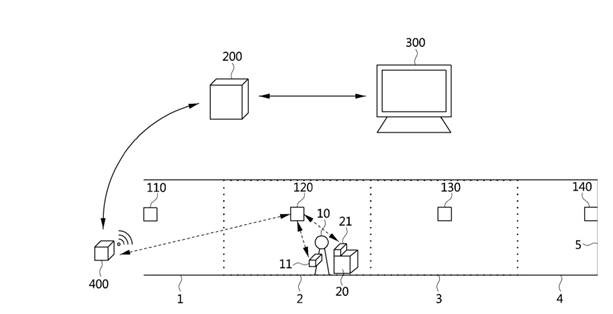New task management system can help to improve safety for tunnel workers : Patent Publication No: GB2564040A
Worker safety is widely accepted as a major challenge facing the construction industry and technology-led businesses around the world have been exploring solutions that might help to improve standards.
Whilst worker safety continues to be a top priority for business owners and construction companies alike, the latest statistics released by the Health and Safety Executive reveal that the sector reported the second highest number of fatalities in 2018/19.
The construction of tunnels can be a particularly hazardous environment for workers, due to factors such as working in a confined space, moving objects, noise, poor visibility and of course, the possibility of collapse. In addition, it is not unusual for explosive devices to be used during tunnel construction.
To help address these wide-ranging safety issues, a Korean company, GSIL Co, has applied for UK patent protection for an innovative safety management system designed for use by tunnel construction workers. The technology is based on the company’s already-granted Korean patent for the same system.
The UK patent application (publication number GB2564040A) was published on 2 January 2019 and can be found at the link here.
GSIL Co’s concept requires each worker (10) and each piece of equipment (20) to be provided with a tracking beacon (11, 21). Each of the beacons can be linked to a worker’s smartphone and are configured to collect a variety of data, enabling the system to determine what the worker is doing.
The system also includes a number of information collection terminals (110, 120, 130, 140), which are installed periodically along the length of the tunnel. These terminals collect environment data, such as air quality and temperature data, from different sections of the tunnel.
The collected information is fed back to a server (200), as shown in figure 1 below, which enables the location of workers and equipment, as well as any changes in environmental conditions, to be accurately recorded and monitored in real time.

Figure 1
The system analyses the collected information and provides live feedback to workers at the site. For example, the system may find that a piece of safety equipment is required for workers operating in a specific location, based on detected environmental factors. The system can then establish whether workers in a particular area are using the required safety equipment or not and warn them accordingly.
The system is also able to set so-called ‘danger zones’ based on environmental factors, obstacles or dangerous works being undertaken. It can then notify workers entering these locations of any potential dangers.
One important feature of the management system is that it is able to determine what equipment is being used in a particular area, and who is operating it, based on the available data. This information can help to identify high-risk situations, for example, if a worker is using a piece of equipment without authorisation.
In a worst-case scenario, in the event of a tunnel collapse, the worker beacons (11), can help to pinpoint the presence and location of any individuals who might be trapped.
From a strategic viewpoint, GSIL Co’s decision to file for patent protection in Korea and then hold off a while before filing in other territories, is a considered move. Once an initial patent has been filed, companies have a 12-month window in which to file subsequent patent applications (with the same content) overseas. If these are subsequently granted, protection is backdated to the date of the first filing. This means the company has time to assess market demand and the likelihood of success in securing patent protection, before deciding whether to file overseas.
While its UK patent is still pending, this innovative safety management system is an excellent example of how international adoption of new technologies can help to mitigate risks for construction workers around the world.
Mark Sugden is a patent attorney specialising in the construction sector at European intellectual property firm, Withers & Rogers.
If you would like to read more articles like this then please click here.
The post Patent of the month appeared first on UK Construction Online.
Walang komento:
Mag-post ng isang Komento